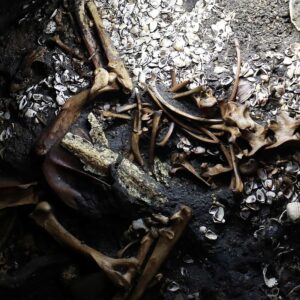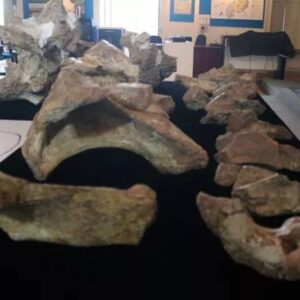In a groundbreaking archaeological discovery, researchers have uncovered a remarkably well-preserved sitting mummy, offering unprecedented insights into ancient civilizations. This extraordinary find, unearthed in a remote desert region, promises to revolutionize our understanding of historical burial practices and the lives of those who lived thousands of years ago.
The sitting mummy, believed to be over 3,000 years old, was found in a tomb that had remained untouched for centuries. Its unique seated position has intrigued archaeologists and historians alike, prompting a series of intensive investigations to decode the mysteries it holds.

The Discovery
The mummy was discovered by a team of archaeologists during an excavation in an ancient burial ground. The tomb, adorned with intricate carvings and hieroglyphics, hints at the mummy’s significance in its time. Initial examinations suggest that the individual was of high status, possibly a revered priest or a noble figure.
Unraveling the Mysteries
The investigation into the sitting mummy involves a multidisciplinary approach, combining advanced technology with traditional archaeological methods. Here are some key aspects of the research:
- Radiocarbon Dating and DNA Analysis: Scientists are conducting radiocarbon dating to determine the precise age of the mummy. DNA analysis will provide insights into the individual’s lineage, health, and possible causes of death, offering a glimpse into the genetic makeup of ancient populations.
- Digital Imaging and 3D Reconstruction: Using cutting-edge imaging technology, researchers are creating detailed 3D reconstructions of the mummy and its burial chamber. This allows for a non-invasive exploration of the tomb’s interior, revealing artifacts and structures without disturbing the site.
- Cultural and Historical Context: Experts in ancient history and anthropology are examining the artifacts and inscriptions found within the tomb. These findings will help contextualize the mummy’s life, shedding light on the social, religious, and cultural practices of the time.
The Significance of the Seated Position
The mummy’s seated position is a rare and intriguing feature. Unlike the more common supine or fetal positions seen in other mummies, the sitting posture suggests a unique ritualistic or symbolic significance. Researchers are exploring various theories, including the possibility that the position was meant to convey power, authority, or a specific role in the afterlife.

Implications for Modern Understanding
This discovery not only enriches our knowledge of ancient civilizations but also underscores the importance of preserving archaeological sites. Each finding adds a piece to the puzzle of human history, helping us understand how our ancestors lived, worked, and believed.

Moving Forward
As the investigation progresses, the research team plans to publish their findings in a series of academic journals and present them at international conferences. The data collected will be shared with museums and educational institutions, ensuring that the knowledge gained from the sitting mummy reaches a global audience.
The discovery of the sitting mummy is a testament to the enduring fascination with our ancient past. Through meticulous research and advanced technology, we continue to unravel the secrets of history, bringing us closer to the people who shaped our world millennia ago.





